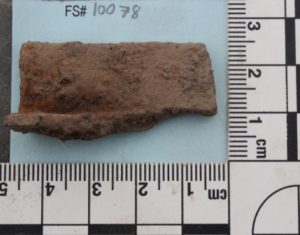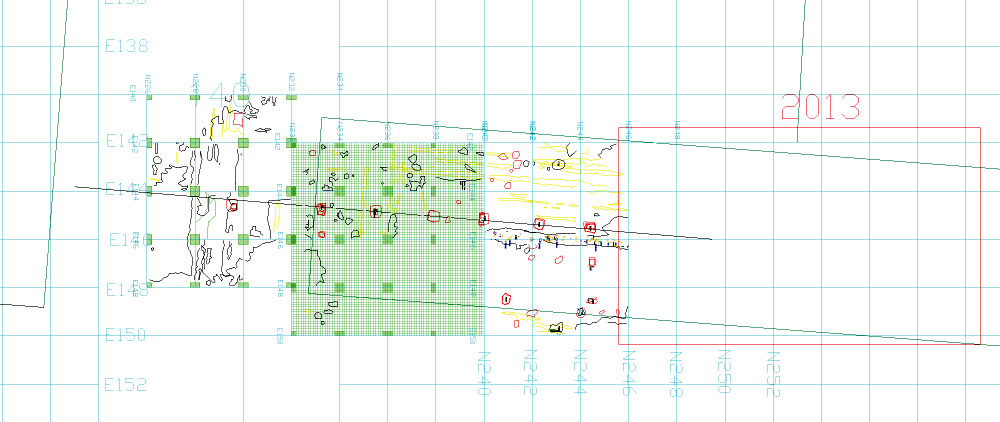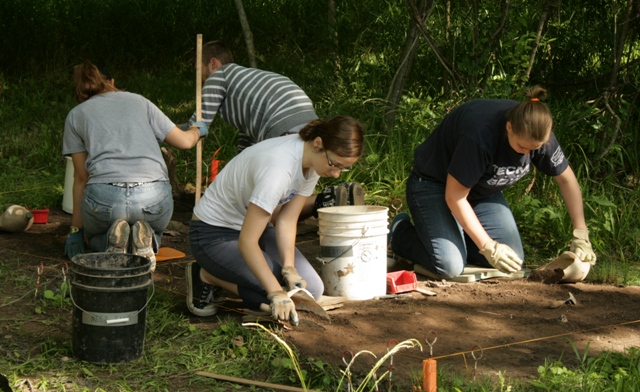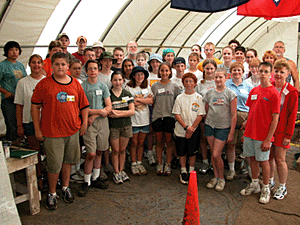The latrine is a valuable asset in our dig because there is so much we can learn from it and there are exciting artifacts to find. An important part while excavating the latrine is reconstructing the depositional history. The latrine is in an area where there has been little to no disturbance since the Civil […]
Read full post »Archives for the ‘From the Students’ Category
2016 Field Report 3
Friday, July 8, 2016
Over the past 3 weeks we have found many Field Specimens (FSs) which we defined in a previous article. We discover FSs while we are excavating or while screening through the soil. On Johnson’s Island we find artifacts from not only the Civil War, but from past Native Americans use. Getting to see each item […]
Read full post »2016 Field Report 1
Tuesday, June 21, 2016
Monday, June 6, was the first day of this year’s field school! It consisted of orientation at both the Heidelberg University Archaeology lab and the prison site on Johnson’s Island. In the lab, we learned how to identify and wash artifacts, while keeping them all properly sorted by provenience (their precise location). After becoming familiar with […]
Read full post »After the Field: Laboratory Analysis
Monday, July 6, 2015
At the Center for Historic and Military Archaeology, Heidelberg University Although working in the field is a major component of archaeology, lab work comprises the majority of an archaeologist’s time. The lab is where everything comes together, be it analysis, background research, or actual artifact refitting. There are a multitude of tasks done in the […]
Read full post »How to Open and Set Up New Units for Excavation
Thursday, June 18, 2015
Director’s Note: Every unit we open up is tied to the overall site grid that was established back in 1989. There are several brass plate permanent datum points cemented into the ground. From these we place stakes along the grid in the areas we wish to investigate. As noted, we are set up to explore […]
Read full post »2013 Field Report
Monday, June 17, 2013
We are very excited about this year’s students and our research goals. We are working the soils directly beneath Block 8, and we are positioned approximately in the middle of the block this year. The latrine (sink) being excavated weathered the winter well, and we will begin excavations into the northern portion of this feature […]
Read full post »2011 Field Report 1
Thursday, June 16, 2011
Life in Block 8 The following was prepared by the students participating in the excavations at the Johnson’s Island Civil War Prison site this summer as part of the Heidelberg University Archaeological Field School. Since they are excavating within the former location of Block 8, they have decided to present some historical information on life […]
Read full post »HELIX Program
Friday, July 12, 2002
From July 8-12, 2002, Bowling Green State University’s HELIX program experienced Johnson’s Island. COMPANY A: FOOD AT JOHNSON’S ISLAND by Kurt Gee, Monya Anderson, Lindsay Becks, Patrick Bonifas, Bryon Casebolt, Kaylin Gillette, and Hannah Tabory The prisoners staying at Johnson’s Island during the American Civil War were treated very well in comparison to other prison […]
Read full post »Future Scientists
Thursday, June 27, 2002
The following was submitted by Robert Segedi, coordinator of the Future Scientists Program for the Cleveland Museum of Natural History, who were at the site from June 24-27, 2002. For the past several years, field experiences in archaeology at Johnson’s Island have been important components of adult and youth educational programs sponsored by The Cleveland […]
Read full post »

